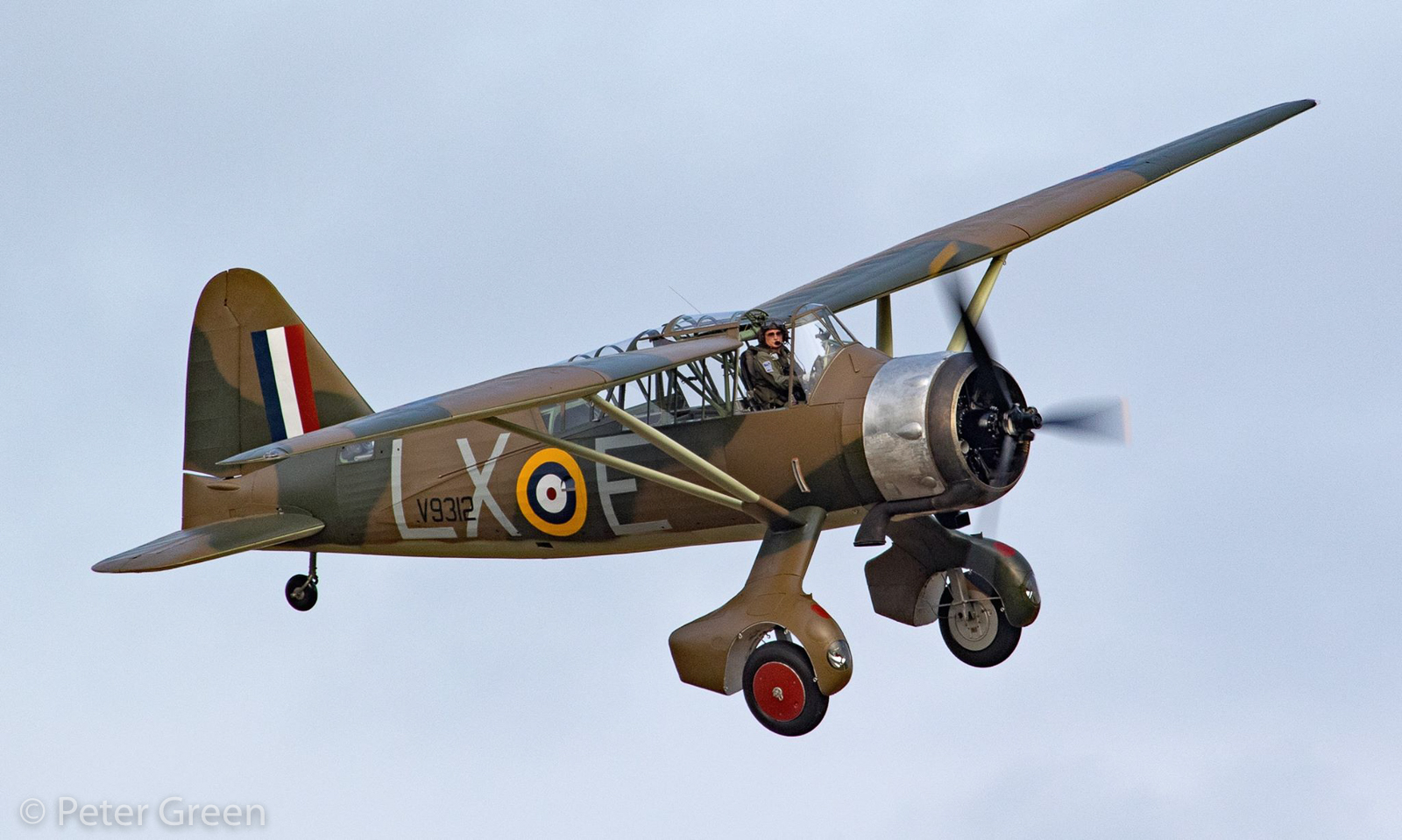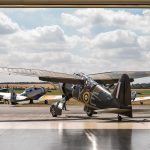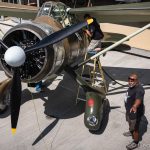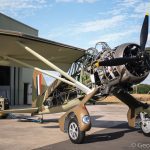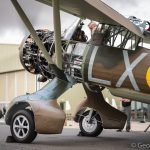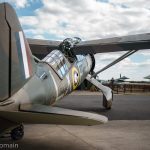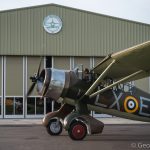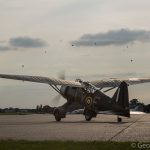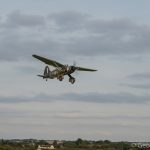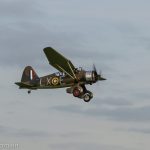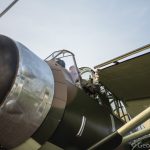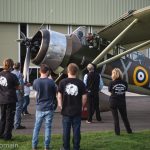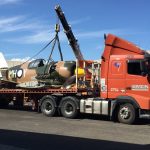As twilight approached on a sultry, summer’s eve four days ago the Aircraft Restoration Company’s John Romain started up the Bristol Mercury engine in Westland Lysander Mk.IIITT V9312 in preparation for her first flight since December 30th, 1944. The crackle from the Mercury’s exhaust startled a murder of crows, which scattered from the grass as the Lysander approached the taxiway at Duxford Airfield in Cambridgeshire, England. Following a full-power engine run-up, the Lysander began her takeoff, and with Romain’s characteristic silky-smooth skills, the legendary WWII clandestine liaison aircraft took to the skies again, marking the culmination of fourteen years of dedicated attention from the highly experienced restoration team at ARCo.
Lysander V9312 originally rolled off the Westland production line in Yeovil, Somerset in late 1940, initially as a Mk.IIIa variant. The Royal Air Force took her on strength shortly afterwards, assigning her to 33 Maintenance Unit at RAF Lyneham on January 4th, 1941. According to ARCo. the Lysander then served with No.612, 225 and 4 Squadrons. While serving with 4 Squadron at RAF Clifton, near the City of York, the Lysander was involved in an accident on April 26th, 1942, suffering Category B damage. During the repairs, the RAF had the Lysander converted into a target tug, hence the TT designation, and assigned the aircraft to the Royal Canadian Air Force to take part in the Commonwealth Air Training Plan. The disassembled aircraft was loaded aboard a ship at the Liverpool docks and sailed for Canadian shores on October 18th, 1942. The Lysander served at Mossbank in Saskatchewan. After the war, the Canadian government disposed of the aircraft. A farmer bought V9312 and she sat on his land, slowly deteriorating until 1972 when the legendary Harry Whereatt acquired her remains, storing them at his place in Assiniboa, Saskatchewan, alongside a good number of additional surplus RCAF Lysanders, Hawker Hurricanes and other retired military aircraft. Whereatt eventually sold the airframe to Kermit Weeks in 1991. Weeks did little other than store the aircraft at his facility in Polk City, Florida during his ownership. In 1998 Weeks bought an airworthy Canadian-built Lysander (a composite Mk.IIIa made up of RCAF serials 2341, 2349 and 2391). With no real need to hang on to V9312, he sold her on to the Aircraft Restoration Company in 2003. Much like their magnificent Bristol Blenheim Mk.I L6739, ARCo put time into the Lysander’s restoration when time and resources were available between schedules for their clients projects. Fourteen years later, the Lysander has emerged as a major new addition to the warbird circuit, one of just a handful of the type still flying. This is just the latest success in the company’s peerless history of restoring, overhauling and maintaining WWII aircraft, which counts almost forty different aircraft types, and almost a third of all Spitfires currently flying since their shop first opened its doors in the early 1990s.
Once the Lysander has finished her flight test regime, and had a few small additional finishing details added (like the wheel spat covers and propeller spinner), she is expected to make her public debut at the Goodwood Revival between September 7th and 9th.
Many thanks indeed to ARCo’s George Romain and to Peter Green for the marvelous images accompanying this article!







